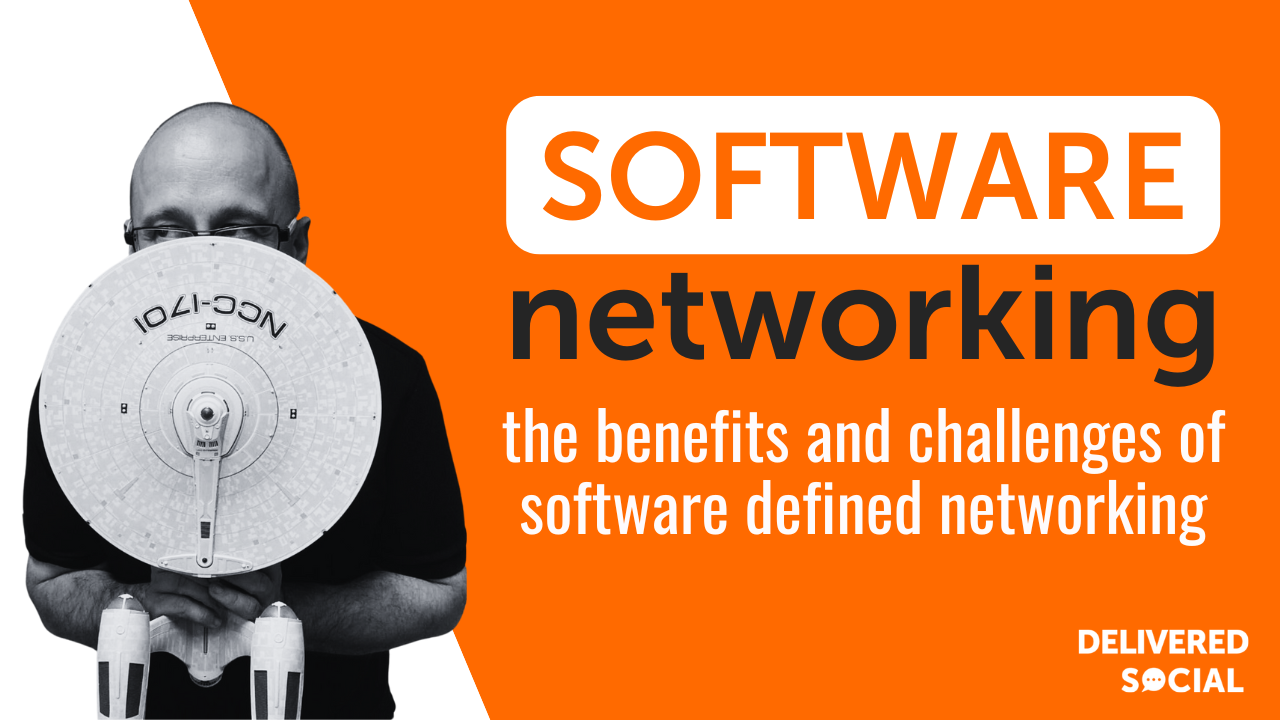
Software Defined Networking (SDN) is an architectural approach that allows IT professionals to control and manage networks through various tools and software apps. The tools enable programmers to use different approaches to customize intelligent and centralized network infrastructures. An SDN architecture is designed to seamlessly work with other systems, routers, or switches regardless of the brand.
It is important to monitor your network in SDNs to provide greater visibility and control. SDN technologies allow IT experts to optimize systems and quickly identify challenges such as latency issues and bottlenecks. It helps analyse behaviour and traffic patterns in networks for real-time detection and mitigation of online threats.
SDN allows resource utilization by offering insights to help in the effective allocation or deployment of systems. This article will discuss the benefits of software-defined networking and the challenges of its implementation. It will delve further into the application of the DNS system and its role in monitoring networks.

Image Source: Freepik
Benefits of Software-Defined Networking
Modern-day networks work on complex connections combining an array of devices and systems. Computers and other gadgets get interconnected through cloud computing to allow remote working and storage. Such networks need to share data in real-time and on a massive scale.
An SDN model is an excellent option for an extensive and complex system that needs a lot of up-time. It allows programmers to re-route networks on the go. The benefits of software-defined networking are many.
When implementing an SDN network, one of the devices you can use for programming is a Mac. However, working with different applications might cause problems for Mac. Bluetooth is an essential part of working with Mac devices and sometimes it starts creating issues. When you face trouble connecting with Bluetooth devices on Mac, you can find solutions on how to resolve these Sonoma Bluetooth problems. Cleaning up your device, restarting it, and performing maintenance are some of the common ways to speed up and resolve Bluetooth problems.
Improved network flexibility and agility
One of the main advantages of an SDN application is that it is an agile and flexible tool. Its dynamism allows IT experts to modify networks for optimization based on the needs of a company. It centralizes all systems in one place allowing real-time adjustments.
SDN offers quick adaptation to the fast-changing online patterns and business needs. Its flexibility is necessary in a situation that requires effective scalability. An SDN infrastructure proves useful to businesses that leverage virtual networks and cloud services that conventional systems cannot serve.
Enhanced network security
IT experts add SDN layers into networks to get greater visibility and control of online traffic. The technology offers a centralized view of the system and thus boosts network security. System security administrators leverage SDNs to quickly detect and respond to any security threat.
It helps minimize the chances of attacks and improve system resilience against threats. An SDN application enables security managers to micro-segment networks and isolate workloads. The goal of segmentation is to mitigate the movement of attacks laterally.
Firewall monitoring tools: These tools help monitor and control incoming and outgoing network traffic to block malicious attempts.
Cost savings and efficiency
Software-defined network allow companies to exploit their network resources more efficiently. Due to enhanced operations efficiency, businesses save a lot of costs. An SDN protocol comprises automation capabilities that minimize manual system configurations.
Companies benefit from reduced errors and higher output in networks. An SDN system is popular due to its dynamism and fast programming capabilities. It allows efficient resource sharing and bandwidth optimization. In the long run, brands maintain a cost and resource-efficient online infrastructure.
Centralized network management
Different organizations require customized network and infra monitoring strategies. SDN in cloud computing makes managing networks easier. It saves IT personnel the tedious work of configuring different networks separately. Instead, they program and scale the entire system from a centralized point.
Centralization helps streamline the monitoring and management of networks. Programmers implement policies smoothly and create an enhanced coordination of activities within networks. Network managers effectively pinpoint challenges within the network quickly and enhance reliability.
Challenges in implementing Software-Defined Networking
SDN tools are transforming the field of IT and networking in a big way. They improve the management of online systems by offering greater flexibility and agility. Understanding how SDN works is important. Despite the benefits, SDN model implementation does not lack a variety of challenges.
Network performance and reliability concerns
Conventional networks have undergone vigorous improvements to optimize performance. SDN tools were first used in 2011 and are still undergoing improvements. Their architecture still poses compromised performance and reliability at a greater level. The system sometimes causes latency challenges which impact the performance of networks. It is important to note that SDNs operate from a centralized point. In a situation where its network malfunctions, the entire system might fail to work. This can affect a company’s customer success efforts due to service disruptions.
Security risks
An SDN model is highly programmable. It can allow the transfer of all company applications into its infrastructure. On one side, centralized control of networks is an advantage to brands. On the other hand, it poses significant security challenges. If cybercriminals gain access to the system’s controller, they gain access to the entire system. Its flexibility and agility expose it to threats. It can connect a wide range of devices and networks. Each device or network connected to it can cause unauthorized access to the system.
Skill gaps and training
The SDN network has been in use for about a decade. Many IT professionals have not focused much on how to use the system. It is harder for companies to find professionals trained in SDN networking. The traditional networks rely on hardware-centric systems, while an SDN network is a software-centric system. Many organizations have to hire new talent or outsource personnel. They need a dynamic training plan and strategically invest in bridging the skills gaps.

Image Source: Freepik
Applications of Software-Defined Networking
Software-defined networking offers system managers greater adaptability when managing networks. This adaptability has helped improve efficiency and a broad range of uses across multiple areas.
Software-defined networking (SDN) can optimize the performance of ETL pipelines by providing flexible and efficient network management for data processing across systems.
Data centers and cloud networking
One of the software-defined networking examples of applications is data centers and cloud networking. It is applied in different ways as follows:
- Allows automated distribution of network services by eliminating manual configurations.
- Enables fast assignment and reassignment of network resources based on workloads.
- Enables intelligent traffic control by routing or re-routing depending on traffic patterns.
Wide area networks (WANs)
SDN is used in WANs to help brands achieve a variety of goals.
- Boost network security through enhanced administration of security policies centrally. This makes the enforcement and implementation of security protocols easier.
- Management and configuration of remotely distributed networks from a central place. This makes it possible to identify and solve network issues as they can.
Internet of Things (IoT)
SDN is used to connect thousands of devices into one network. The objectives of device interconnectedness may differ based on company needs. SDN in IoT allows the following:
- Improve quality of service by sharing network resources based on device or system needs.
- Scaling productivity as interconnected devices increase.
Telecommunications and service providers
SDN allows telecommunication and service providers to offer improved services to customers. They use the technology to achieve different goals, such as:
- Improving the cost of running networks by automation tasks.
- Slicing networks into multiple remote systems.
- Allowing rapid deployment of services to meet surging customer demands.
The Role of Monitoring in Software-Defined Networking
SDN can be used in network traffic pattern analysis to allow real-time monitoring. It offers greater network visibility and detects anomalies quickly.
Importance of real-time monitoring
Real-time monitoring in SDN is critical if system admins want to gain insights fast. It allows IT professionals to identify network issues quickly and take the right mitigation steps. If the system needs adjustments, SDN allows dynamic programming. Due to this, managers can make changes for optimized performance.
Network visibility and traffic analysis
Network managers need to understand every detail happening in their network. This helps them get a view of data flows and ensure the network is working as expected. SDN decouples networks from their principal hardware. This makes visibility more important. It offers insights and allows administrators to examine networks for efficiency.
Detecting anomalies and security threats
SDN’s centrally managed control makes the work of IT experts easier. However, it also increases network vulnerabilities. Real-time monitoring helps pinpoint irregularities and detect anomalies. It helps to quickly detect breaches and facilitates fast response to incidences. As a result, companies minimize the harm caused by security breaches.
Performance optimization and quality of service
Monitoring in SDN for performance is important for quality service delivery. Consistent observation of the network offers system managers a chance to view opportunities. They can use the chances to enhance or streamline resource distribution. They can modify the network to enhance customer experience.
Monitoring Solutions for SDNs
Third-party monitoring tools can help enhance SDN tools’ functionality. They provide additional features that traditional SDN tools cannot offer. Every tool provided by third-party software allows brands to improve system safety. They boost visibility and efficiency, offering a variety of benefits to brands.
- Improves scalability to enable the system to manage more traffic and intricate connections.
- Integrates with multiple systems, including conventional and non-SDN attributes.
- Permits more network modification to facilitate scaling.
- Provides cutting-edge security tools that deter threats and obstruct online criminals.
- Boosts visibility of networks and provides real-time insight.
Conclusion
SDN is a useful technology that offers a variety of benefits to brands. It allows system customizations, which enhances agility and efficiency. The technology simplifies system configuration by offering a central control point. Despite its advantages, SDN implementation presents a variety of challenges. Many organizations face different security concerns and lack experienced personnel. Regardless, real-time monitoring in SDN is a critical aspect of business. It offers a dynamic perspective on issues affecting intricate systems. System administrators can create a robust network and swiftly identify anomalies. SDN tool efficiency is increased through integration with third-party applications. They provide more performance and customization options.
Interested In Working Together?
Introducing Delivered Social. We're The Most-Rated Digital Agency In Surrey & Hampshire – We've Got To Be Doing Something Right.
Delivered Social is a digital marketing agency with one mission—to help businesses grow. We're famous in Guildford and Portsmouth for our social clinics. We believe in free advice. We build lasting relationships because our team prides itself on being helpful, which our clients appreciate.
If you are looking for a new website or an agency to manage your social media presence, we can help.
If you need something slightly different, here's a super handy list of all our services, or you can always email us.























